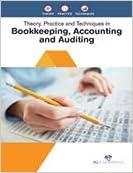

99. Consolidation subsequent to date of acquisition-Cost method with noncontrolling interest AAP, and upstream intercompany inventory sale Assume that, on January 1, 2010, a parent company acquired an 80% interest in a subsidiary fat 5889,600 in cash. The total fair value of the controlling and noncontrolling interests on the acquisi date was $1.112.000, which is $440,000 over the book value of the subsidiary's Stockholders on the acquisition date. The parentesigned the excess to the following [A] assets [A] Asset Patent. ..... Goodwill.... Initial Fair Value 160,000 280,000 $440,000 Useful Life 10 years On the acquisition date, the retained earnings of the subsidiary was $400,000. The acquisition-date Good- Allie allocated to the parent and subsidiary in an 80:20 proportion, respectively. Assume that the subsid iary sells inventory to the parent (upstream) which includes that inventory in products that it ultimately sells customers outside of the controlled group. You have compiled the following data as of 2015 and 2010. 2015 2016 Transfer price for inventory sale. Cost of goods sold... Gross profit. ....... % Inventory remaining ... Gross profit deferred ..... EOY receivable/payable.... $480,000 (400,000) $80,000 25% $ 20,000 $560,000 (464,000) $96,000 35% $ 33,600 $ 56,000 $ 96,000 The inventory not remaining at the end of the year has been sold outside of the controlled group. The parent uses the cost method of pre-consolidation investment bookkeeping. The parent and the subsid- jary report the following pre-consolidation financial statements at December 31, 2016: Subsidiary Parent Subsidiary Income statement: Sales.. Cost of goods sold......... Gross profit. ....... Income (loss) from subsidiary ... Operating expenses........ Net income. $2,000,000 (1,200,000) 800,000 Balance sheet: Cash.. Accounts receivable... Inventory.... Equity investment..... Property, plant and equipment (PPE), net ... $5,360,000 (3,600,000) 1,760,000 25,600 (1,600,000) $ 185,600 $ 320,000 480,000 640,000 $ 480,000 640,000 800,000 889,600 2,960,000 $5,769,600 (640,000) 160,000 800,000 $2,240,000 $ Statement of retained earnings: BOY retained earnings...... $1,441,000 Net income...... 185,600 (160,000) EOY retained earnings ....... $1,446,600 Dividends ............ $ 800,000 160,000 (32,000) $ 928,000 Current liabilities... Long-term liabilities .. Common stock... APIC............................... Retained earnings .. $ 703,000 2,400,000 400,000 800,000 1,466,600 $5,769,600 $ 400,000 640,000 112,000 160,000 928,000 $2,240,000 4. Disaggregate and document the activity for the 100% Acquisition Accounting Premium (AAP), the controlling interest AAP, and the noncontrolling interest AAP. b. Calculate and organize the profits and losses on intercompany transactions and balances. - Compute the pre-consolidation Equity Investment account beginning and ending balances assuming that the parent company used the equity method instead of the cost method. For each of these computations, start with the stockholders' equity of the subsidiary. Compute the amount of the [ADJ) consolidating entry. Daa e Independently compute the owners' equity attributable to the noncontrolling interest beginning and ending balances starting with the owners' equity of the subsidiary. Independently calculate consolidated net income, controlling interest net income and noncontrolling interest net income. 5. Complete the consolidating entries according to the C-E-A-D-1 sequence and complete the consolidation worksheet. 99. Consolidation subsequent to date of acquisition-Cost method with noncontrolling interest AAP, and upstream intercompany inventory sale Assume that, on January 1, 2010, a parent company acquired an 80% interest in a subsidiary fat 5889,600 in cash. The total fair value of the controlling and noncontrolling interests on the acquisi date was $1.112.000, which is $440,000 over the book value of the subsidiary's Stockholders on the acquisition date. The parentesigned the excess to the following [A] assets [A] Asset Patent. ..... Goodwill.... Initial Fair Value 160,000 280,000 $440,000 Useful Life 10 years On the acquisition date, the retained earnings of the subsidiary was $400,000. The acquisition-date Good- Allie allocated to the parent and subsidiary in an 80:20 proportion, respectively. Assume that the subsid iary sells inventory to the parent (upstream) which includes that inventory in products that it ultimately sells customers outside of the controlled group. You have compiled the following data as of 2015 and 2010. 2015 2016 Transfer price for inventory sale. Cost of goods sold... Gross profit. ....... % Inventory remaining ... Gross profit deferred ..... EOY receivable/payable.... $480,000 (400,000) $80,000 25% $ 20,000 $560,000 (464,000) $96,000 35% $ 33,600 $ 56,000 $ 96,000 The inventory not remaining at the end of the year has been sold outside of the controlled group. The parent uses the cost method of pre-consolidation investment bookkeeping. The parent and the subsid- jary report the following pre-consolidation financial statements at December 31, 2016: Subsidiary Parent Subsidiary Income statement: Sales.. Cost of goods sold......... Gross profit. ....... Income (loss) from subsidiary ... Operating expenses........ Net income. $2,000,000 (1,200,000) 800,000 Balance sheet: Cash.. Accounts receivable... Inventory.... Equity investment..... Property, plant and equipment (PPE), net ... $5,360,000 (3,600,000) 1,760,000 25,600 (1,600,000) $ 185,600 $ 320,000 480,000 640,000 $ 480,000 640,000 800,000 889,600 2,960,000 $5,769,600 (640,000) 160,000 800,000 $2,240,000 $ Statement of retained earnings: BOY retained earnings...... $1,441,000 Net income...... 185,600 (160,000) EOY retained earnings ....... $1,446,600 Dividends ............ $ 800,000 160,000 (32,000) $ 928,000 Current liabilities... Long-term liabilities .. Common stock... APIC............................... Retained earnings .. $ 703,000 2,400,000 400,000 800,000 1,466,600 $5,769,600 $ 400,000 640,000 112,000 160,000 928,000 $2,240,000 4. Disaggregate and document the activity for the 100% Acquisition Accounting Premium (AAP), the controlling interest AAP, and the noncontrolling interest AAP. b. Calculate and organize the profits and losses on intercompany transactions and balances. - Compute the pre-consolidation Equity Investment account beginning and ending balances assuming that the parent company used the equity method instead of the cost method. For each of these computations, start with the stockholders' equity of the subsidiary. Compute the amount of the [ADJ) consolidating entry. Daa e Independently compute the owners' equity attributable to the noncontrolling interest beginning and ending balances starting with the owners' equity of the subsidiary. Independently calculate consolidated net income, controlling interest net income and noncontrolling interest net income. 5. Complete the consolidating entries according to the C-E-A-D-1 sequence and complete the consolidation worksheet








